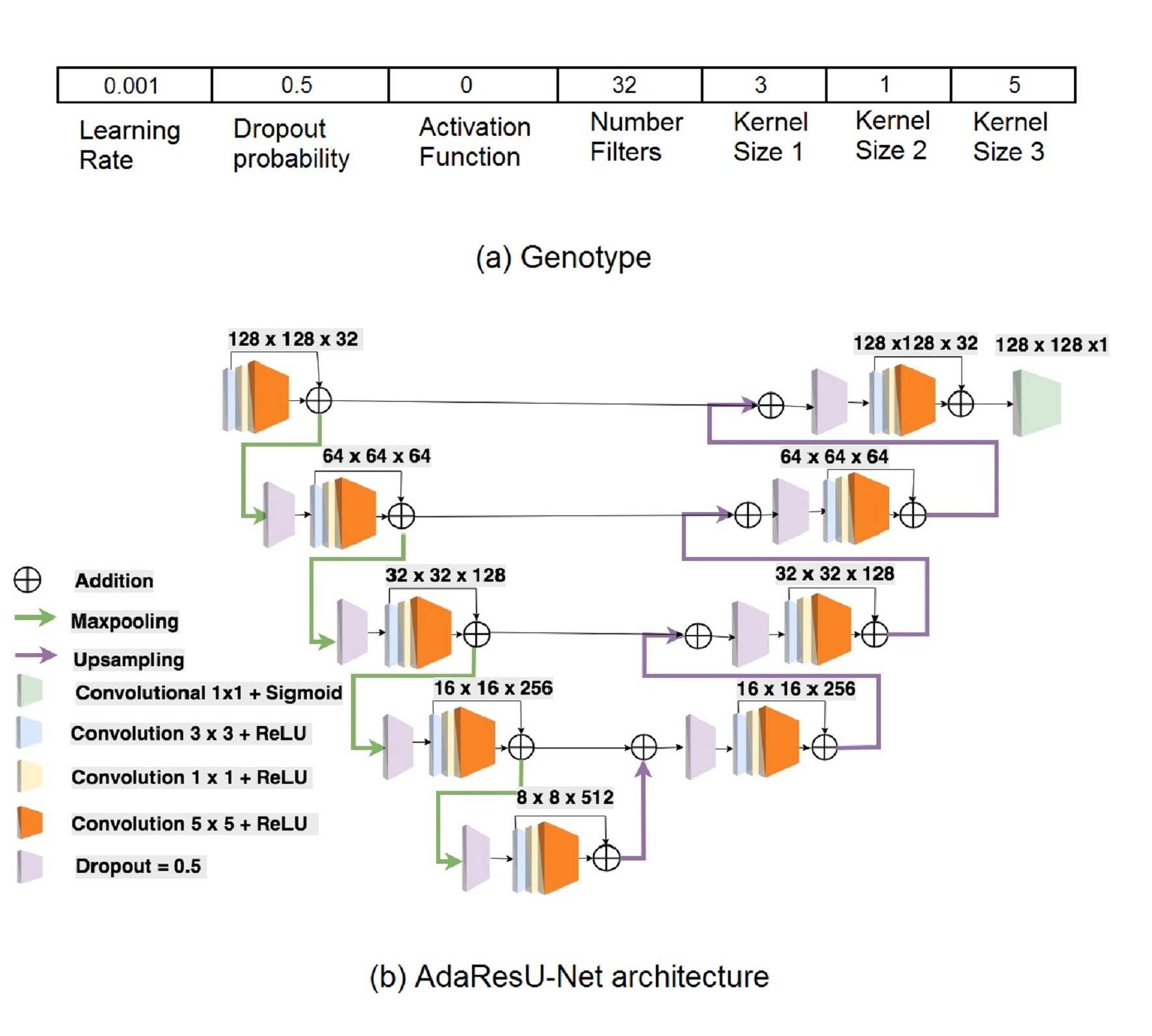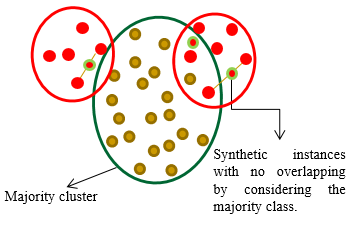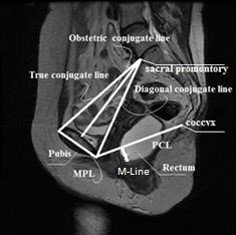
Selected Projects
Deep learning methods have become very successful at solving many complex tasks such as image classification and segmentation, and speech recognition. However, the success of a deep neural network relies on finding the proper configuration for the task in hand. Given the vast number of hyperparameters and massive search space, manually modifying and fine-tuning deep learning architectures requires extensive experience and time. Moreover, it has become increasingly important to design networks that optimize their performance while minimizing their size to prevent over-parametrization and enable their use in computationally limited environments. We are working on the design of neural architecture search (NAS) and multiobjective evolutionary optimization approaches that can automatically search for the best hyperparameters and architecture to a particular dataset while minimizing the size of the network.
Baldeon Calisto, M., and Lai-Yuen, S., "Neural Architecture Search with an Efficient Multiobjective Evolutionary Framework,"
arXiv preprint arXiv:2011.04463, 2020.
Baldeon Calisto, M., and Lai-Yuen, S., "EMONAS: Efficient Multiobjective Neural Architecture Search Framework for 3D Medical Image Segmentation,"
SPIE Medical Imaging, San Diego, CA, February 14-18, 2021.
Baldeon Calisto, M., and Lai-Yuen, S., "Adapting Deep Neural Networks with an Efficient Multiobjective Evolutionary Framework,"
INFORMS Data Science Workshop, November 7, 2020. (Best Paper Award Nominee)
Baldeon Calisto, M., and Lai-Yuen, S., "Efficient Multiobjective Neural Architecture Search Framework using a Surrogate-Assisted Evolutionary Algorithm,"
INFORMS Annual Meeting, November 7-13, 2020.
Baldeon Calisto, M., and Lai-Yuen, S., "AdaEn-Net: An Ensemble of Adaptive 2D-3D Fully Convolutional Networks for Medical
Image Segmentation," Neural Networks, 2020.
Baldeon Calisto, M., and Lai-Yuen, S., "Self-Adaptive 2D-3D Ensemble of Fully Convolutional Networks for Medical Image Segmentation,"
SPIE Medical Imaging, Houston, TX, February 15-20, 2020.
Baldeon Calisto, M., and Lai-Yuen, S., "Self-Adaptive 2D-3D Ensemble of Fully Convolutional Networks for Medical Image Segmentation,"
in arXiv preprint arXiv:1907.11587, 2019.
Baldeon Calisto, M., and Lai-Yuen, S., "AdaResU-Net: Multiobjective Adaptive Convolutional Neural Network for Medical Image Segmentation,"
Neurocomputing, 2019.
Baldeon Calisto, M., and Lai-Yuen, S., "ResU-Net: Residual Convolutional Network for Prostate MRI Segmentation," IISE Annual Conference & Expo, Orlando, FL,
May 19-22, 2018. (Best Student Paper Award Finalist)
In many applications, the dataset for classification may be highly imbalanced where most of the instances in the training set may belong to one of the classes (majority class) while only a few instances are from the other class (minority class). Conventional classifiers will strongly favor the majority class and ignore the minority instances. We are working on oversampling methods for imbalanced binary dataset classification and ordinal regression.
Nekooeimehr, I., and Lai-Yuen, S., "Adaptive Semi-Unsupervised Weighted Oversampling (A-SUWO) for Imbalanced Datasets",
Expert Systems with Applications, 46, 2016, pp. 405-416.
Nekooeimehr, I., and Lai-Yuen, S., "Cluster-based Weighted Oversampling for Ordinal Regression (CWOS-Ord)," IIE Annual Conference & Expo,
Anaheim, CA, May 21-24, 2016. (Best Paper Award)
Medical imaging has become important in assessing medical cases that may not be evident on clinical examination. Given the growing number of these images, computer algorithms for the automatic identification and analysis of quantitative information from the images are increasingly needed for medical diagnosis and treatment planning. We are working on the design of image-based models to automatically identify anatomical features and obtain useful quantitative data from medical images. We are also working on data mining techniques for the analysis of image-based and clinical data for decision support in medical diagnosis.
Onal, S., Chen, X., Lai-Yuen, S., and Hart, S., "Automatic Vertebra
Segmentation on Dynamic MRI,"
SPIE Journal of Medical Imaging, 4(1), 2017.
Onal, S., Lai-Yuen, S., Bao, P., Weitzenfeld, A., and Hart, S., "Automated Localization of Multiple Pelvic Bone Structures on MRI",
IEEE Journal of Biomedical and Health Informatics, 20(1), 2016, pp. 249-255.
Onal, S., Lai-Yuen, S., Bao, P., Weitzenfeld, A., Hogue, D., and Hart, S., "Quantitative Assessment of New MRI-based Measurements to Differentiate Low and High Stages
of Pelvic Organ Prolapse using Support Vector Machines", International Urogynecology Journal, 26(5), 2015, pp. 707-713.
Onal, S., Lai-Yuen, S., Bao, P., Weitzenfeld, A., and Hart, S., "MRI-based Segmentation of Pubic Bone for Evaluation of Pelvic Organ Prolapse,"
IEEE Journal of Biomedical and Health Informatics, 18(4), 2014, pp. 1370-1378.
Onal, S., Lai-Yuen, S., Bao, P., Weitzenfeld, A., Green, K., Kedar, R., and Hart, S., "Assessment of a Semi-automated Pelvic Floor Measurement Model for Evaluating
Pelvic Organ Prolapse on MRI," International Urogynecology Journal, 25(6), 2014, pp. 767-773.
Copyright 2022, Dr. Susana Lai-Yuen. All rights reserved.


